
This page created 1 January 2003, and last modified: 28 June 2015 (Seeck amendments commentary expanded)

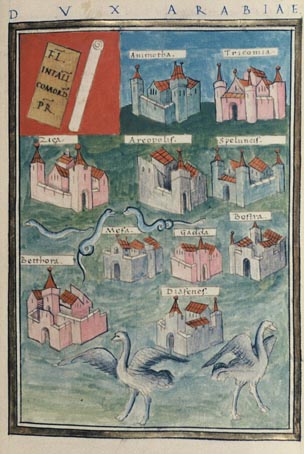 Frontpiece from the Bodleian manuscript, O. The stations depicted are: Animotha, Tricomia, Ziza, Aeropolis, Speluncis Mefa, Gadda, Bostra, Betthora, Diafenes. |
The following units or detachments of units, and prefects and their units are listed as being under the command of the Duke of Arabia:
61.2 Equites scutarii Illyrici, at Animotha along with the following units under a "lesser register":
61.13 Ala nona miliaria, at Avatha |
The "Thracorum" in the Cohors prima Thracorum (61.20) is actually rendered as "Thracocum" in the manuscripts, and was amended to "Thracum" by Seeck (OR.XXXVII.32); likewise the "Dalmati" in the Equites Dalmati Illyriciani (61.4) as amended (OR.XXXVII.16) to "Dalmatae" by Seeck.
Of the two legions listed above, Legio III Cyrenaica had been stationed in the east since the first century, and at its camp Bostra in particular since the early second, while Legio IIII Martia was apparently a late third century creation, though its exact formation date is obscure; the name of its base at Betthorus was replaced in time with El-Lejjun ("the Legion"), located in what is now southern Syria, near the Jordanian border (note that another Al-Lejjun existed, in what is now northern Israel, in which Legio VI Ferrata was once garrisoned). An inscription from far-off Tunisia (CIL 8,23841) mentions the legion (LEGI IV MAR) along with VII Gemina, VI Ferrata, and [III?] Cyrenaica.
Note that a station called Avatha also appears under the Dux Foenicis. That under the Dux Foenicis has been securely identified with Al-Bakhra in modern Syria, notably by a Tetrarchic inscription (CIL 3,6726 = AE 1993,1607) mentioning an officer of the EQ PROMOT [...] INDG, confirming the stationing of the Equites promoti indigenae at this location as reported (63.6) in the Notitia. The Arabian "Avatha" would appear to be a different location (similarly-spelled locations in the Notitia from the neighbourhood include an "Adatha" under the Dux Foenicis, and an "Adada", an "Anatha", an "Acavatha" and an "Ammattha" under the Dux Syriae et Eufratensis Syriae in addition to the "Aditha" and the "Adittha" under the Dux Arabiae).
Below are shown the frontpieces from the Parisian manuscript, P; and the Froben printed edition, B:
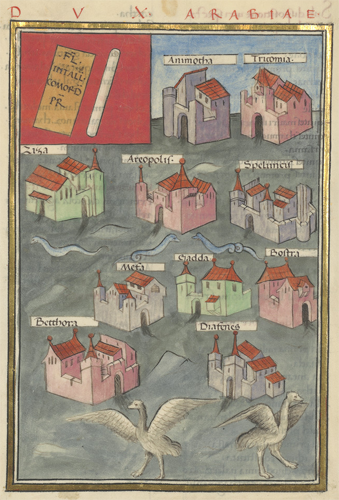
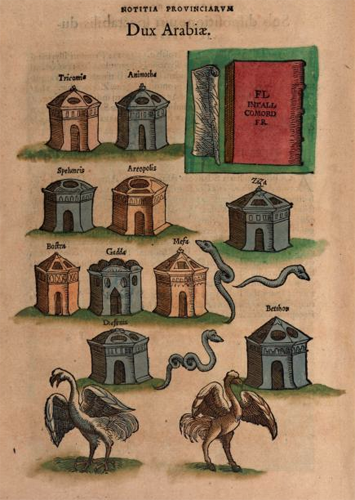
And below are shown the frontpieces from the first set of pictures in the Munich manuscript, M; and the second set, W.
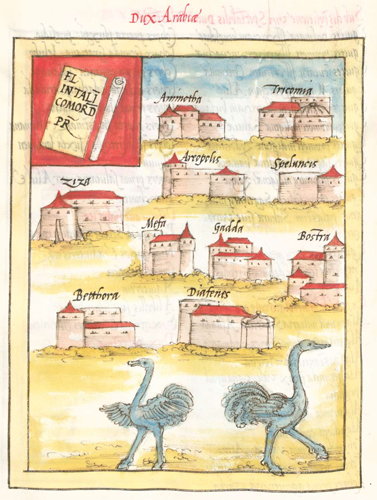
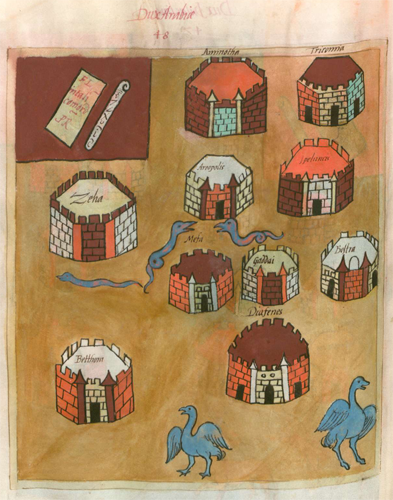
Note that at one point (61.24), the Duke is described as the "Duke & President" (Dux et praeses) - i.e. combining both military and civil powers (cf. the Dux et praeses provinciae Mauritaniae et Caesariensis); this is confirmed at 3.13, where the listing of provinces under the Praetorian Prefect of the Orient notes that the province of Arabia has a Duke; this was bracketed by Seeck for deletion in his edition (OR. II.14), along with the following statement (3.14) that the province of Isauria also has a Military Count, who thus also combines civil and military powers.

Return to the Notitia index page.